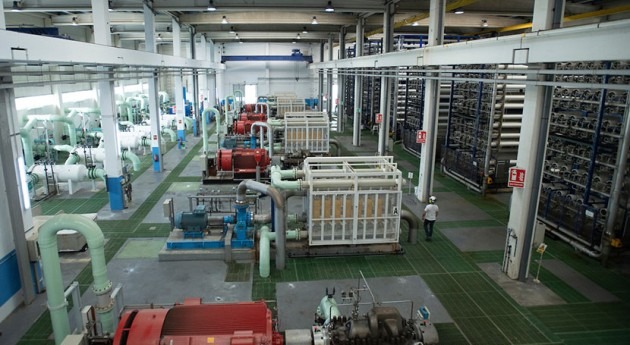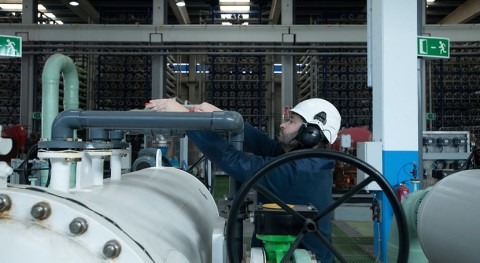In recent years, the pressing need for sustainable water management solutions has driven increased interest in technologies such as Brine Mining and Water Reuse. These innovations hold promise for addressing water scarcity challenges while promoting environmental sustainability. However, quantifying the financial implications of these endeavors requires sophisticated business models tailored to their unique complexities. In this article, we will explore the development of financial business models for Brine Mining and Water Reuse, delving into key considerations and best practices in financial modeling.
Understanding the Challenges
Brine Mining and Water Reuse present distinct challenges that must be addressed in financial modeling. Brine Mining involves the extraction of valuable minerals and metals from saline water sources, requiring significant capital investment and operational expertise. Financial models for Brine Mining must account for factors such as commodity prices, production costs, and regulatory compliance to accurately assess project feasibility and profitability. For example, consider a hypothetical Brine Mining project aiming to extract lithium from brine sources. The financial model would need to factor in upfront investment costs for infrastructure and equipment, operational expenses such as energy and labor, as well as revenue projections based on lithium prices and production volumes.
Similarly, Water Reuse initiatives aim to recycle wastewater for various purposes, including industrial processes and agricultural irrigation. Financial models for Water Reuse projects must consider upfront investment costs, operational expenses, and potential revenue streams from recycled water sales or cost savings. For instance, let's consider a Water Reuse project implemented by a municipal water treatment facility. The financial model would need to account for capital expenditures on treatment infrastructure, ongoing operational costs for maintenance and treatment chemicals, and revenue generated from selling treated water to industrial users or offsetting freshwater purchases.
Moreover, both Brine Mining and Water Reuse projects face risks such as market volatility, regulatory changes, and technological obsolescence, which must be carefully evaluated and managed in financial modeling. For example, changes in government regulations related to water quality standards or environmental protection measures could impact project costs or revenue streams. Financial models should incorporate sensitivity analysis to assess the potential impact of these risks on project outcomes and inform risk management strategies.
Key Considerations in Financial Business Modeling:
- Cost-Benefit Analysis: Robust financial business models begin with a comprehensive cost-benefit analysis to quantify the economic value of Brine Mining and Water Reuse projects. This involves identifying and monetizing both the costs (e.g., capital expenditures, operating expenses) and benefits (e.g., revenue streams, cost savings) associated with each project. For example, let's revisit the hypothetical Brine Mining project. The financial model would calculate the net present value (NPV) of the project by discounting the projected cash flows (revenue minus costs) over the project's lifespan at an appropriate discount rate. If the NPV is positive, it indicates that the project is expected to generate value for stakeholders.
- Revenue Forecasting: Accurate revenue forecasting is essential for assessing the potential financial returns of Brine Mining and Water Reuse projects. Financial models should incorporate factors such as market demand, pricing dynamics, production volumes, and sales channels to estimate future revenue streams reliably. For instance, let's consider a Water Reuse project implemented by a food processing plant. The financial model would project revenue streams based on the volume of treated water sold to nearby agricultural producers for irrigation purposes. By analyzing historical water usage data and market demand trends, the model can estimate the potential revenue generated from water sales.
- Risk Management: Effective risk management is critical for mitigating uncertainties and maximizing the likelihood of project success. Financial models should identify and assess risks such as commodity price fluctuations, regulatory changes, and operational disruptions. Techniques such as Monte Carlo simulation and scenario analysis can help quantify the impact of these risks on project outcomes and inform decision-making. For example, let's consider a Brine Mining project facing uncertainty in lithium prices due to market volatility. The financial model would conduct Monte Carlo simulation to simulate various price scenarios and assess the probability of achieving target financial metrics such as NPV or internal rate of return (IRR) under different market conditions.
- Capital Budgeting: Optimizing capital allocation is essential for maximizing returns on investment in Brine Mining and Water Reuse projects. Financial models should evaluate investment opportunities using techniques such as Net Present Value (NPV), Internal Rate of Return (IRR), and Payback Period analysis. This allows stakeholders to prioritize projects based on their potential financial returns and align investment decisions with strategic objectives. For example, let's consider a company evaluating two potential Water Reuse projects with different investment requirements and expected returns. The financial model would calculate the NPV and IRR for each project to determine which investment option offers the highest value to shareholders.
- Sustainability Metrics: Incorporating sustainability metrics into financial business models is increasingly important for Brine Mining and Water Reuse projects. Metrics such as water savings, carbon footprint reduction, and social impact can provide additional insights into the long-term value proposition of these initiatives. By quantifying environmental and social benefits, financial models can demonstrate the broader impact of Brine Mining and Water Reuse projects and attract support from stakeholders. For example, let's consider a Brine Mining project implementing water recycling technologies to reduce freshwater consumption and minimize environmental impact. The financial model would quantify the water savings achieved and estimate the potential carbon emissions avoided, highlighting the project's contribution to sustainability goals.
The Synergy in Numbers: An Integrated Equation
To quantify the impact of water reuse and brine mining on decarbonization and economic viability, a comprehensive equation can be constructed. This equation, derived from data-driven factors, considers a spectrum of elements crucial for project success:
Positive Economic Impact=∑i=1n(Factori × Tax Multiplieri × Innovation Factori + Outlier Eventsi )
This comprehensive equation provides a robust framework for assessing the potential economic impact of water reuse and brine mining projects. The incorporation of innovation factors and the consideration of outlier events add a layer of adaptability, allowing projects to navigate unforeseen circumstances and leverage technological advancements.
There are several optimization and improvement options that can be applied to the equation above to enhance its accuracy and applicability:
- Data-Driven Factor Estimation: Incorporate actual data for more precise estimates and accurate economic impact assessment.
- Real-Time Factor Updates: Receive real-time updates on factors like water prices and energy costs for up-to-date assessments.
- Scenario Analysis and Sensitivity Modeling: Perform scenario analysis to identify critical factors impacting economic resilience.
- Integration with Financial Modeling Tools: Integrate with financial modeling tools for comprehensive viability assessment.
- Incorporation of Environmental Benefits: Include monetary value of environmental benefits for a holistic project assessment
Developing financial business models for Brine Mining and Water Reuse requires careful consideration of the unique challenges and opportunities associated with these technologies. By incorporating cost-benefit analysis, revenue forecasting, risk management, capital budgeting, and sustainability metrics, stakeholders can make informed decisions and maximize the financial and environmental benefits of Brine Mining and Water Reuse projects. As these technologies continue to play a crucial role in addressing water scarcity and promoting sustainability, sophisticated financial modeling will be essential for unlocking their full potential and driving widespread adoption.
*Disclaimer: Opinions expressed are solely my own and do not represent the views or opinions of my employer.





